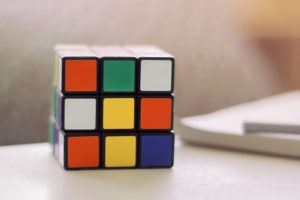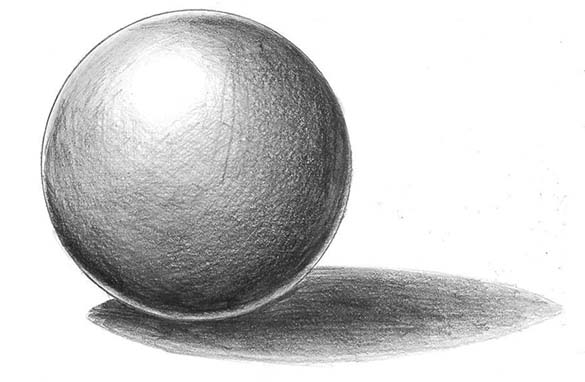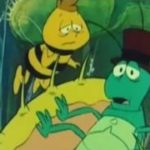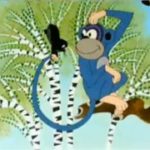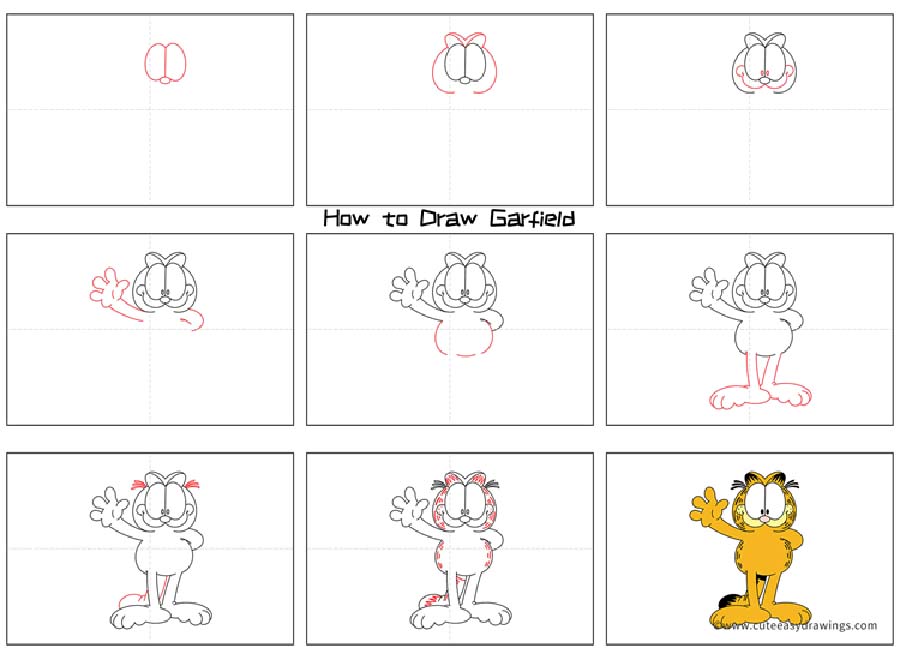The figure shows the transition from the line pattern to planes, and then to solids.

There are rhythmic patterns in all of the drawings. In the next drawing, the same elements are presented in a visual way, giving the drawing a spatial character.

The background and shading of the respective walls with the dotting method were used here (scoring). Hatching with vertical or diagonal lines can be used instead of dotting.
In the following exercises, we will use a freehand drawing of geometric figures, overlapping them and thus creating compositional arrangements. Then we hatch these planes, which overlap, i.e.. overlap.

We can make the same sketch drawing with drawing tools, paying particular attention to the accuracy and diligence of its implementation.

The figure shows four types of dividing the rectangle into smaller internal rectangles or into squares. These drawings show the great possibilities of dividing the rectangle. They can be used in window drawings, door, furniture and many other items.

In addition to drawing various geometric forms with straight lines, curved lines should be used for auxiliary exercises, occurring in ovals, ellipses, wheels, ovoid forms, sigmoid, spiralach itp. These can be drawings made by hand with a pencil or colored pencils.

In this exercise, we will use guidelines in the form of centerlines and axes of symmetry. We make auxiliary lines with thin continuous lines, or dash or dot, the same color or different colors, which makes it possible to distinguish main outlines from auxiliary lines.

An example of an exercise showing the possibility of applying and arranging different layouts of straight lines and curves is the drawing.

Drawing compositions are more interesting and varied, if we make them with crayons or colored inks.

